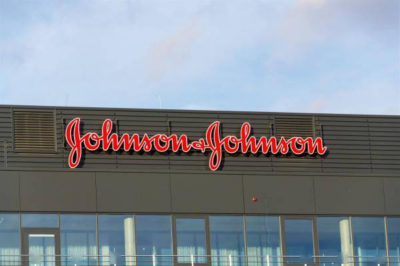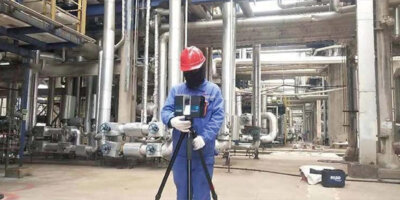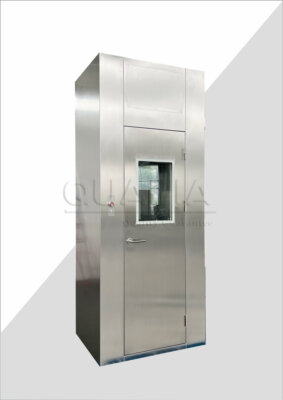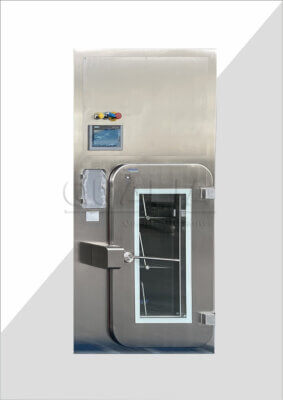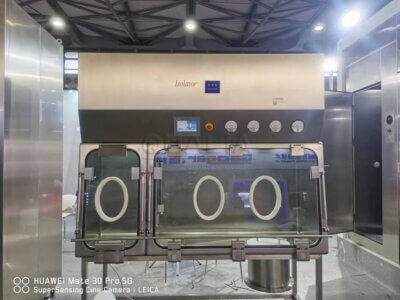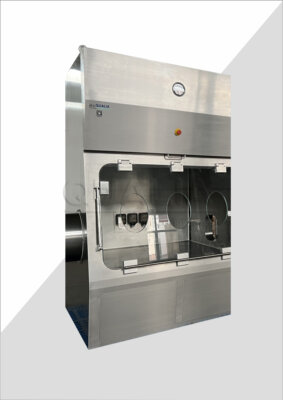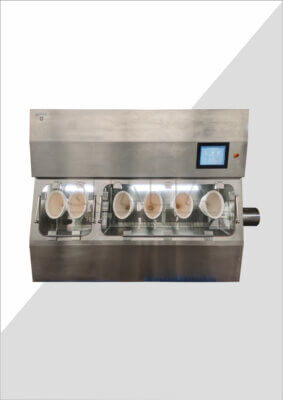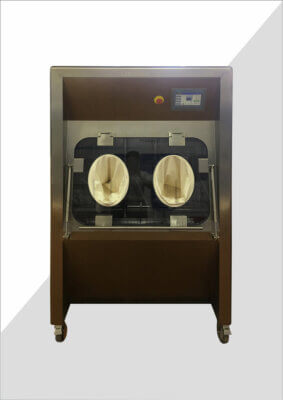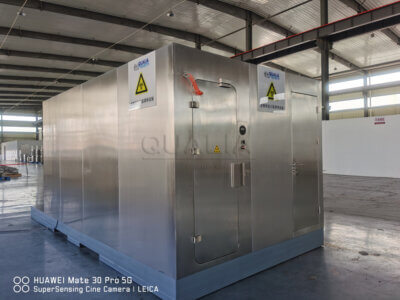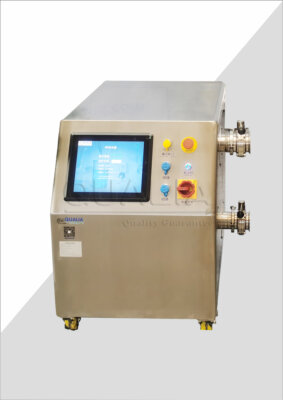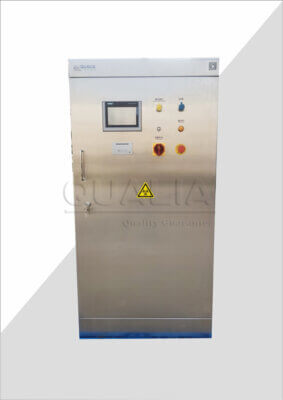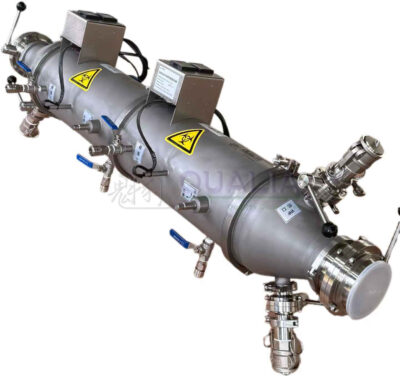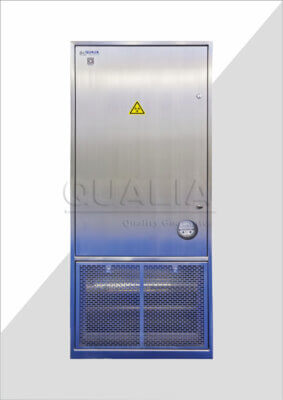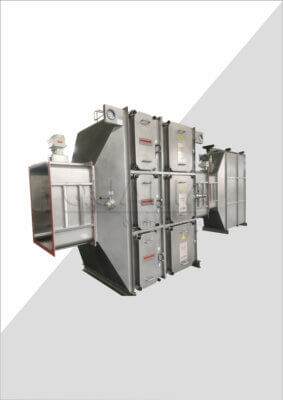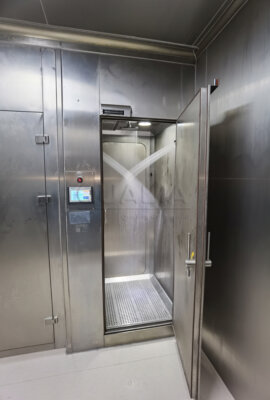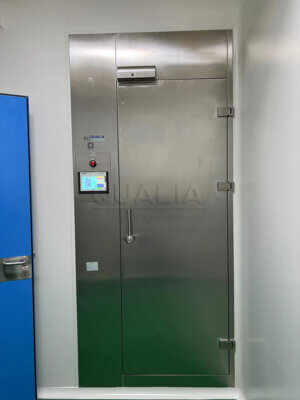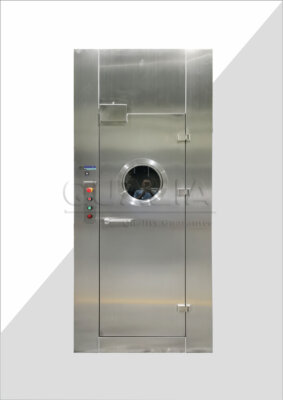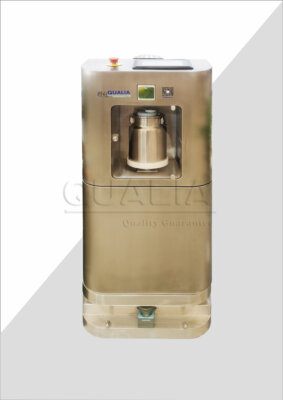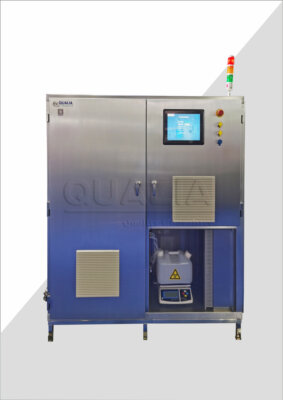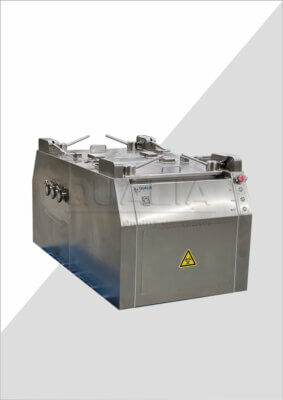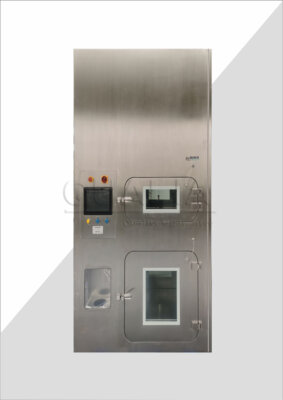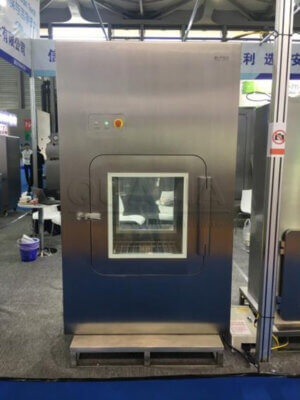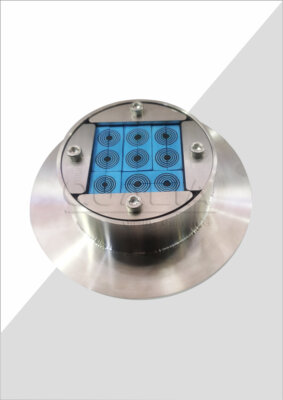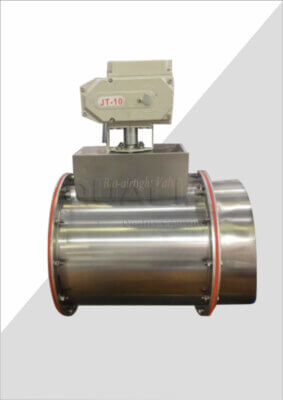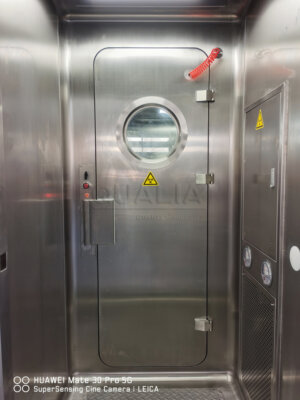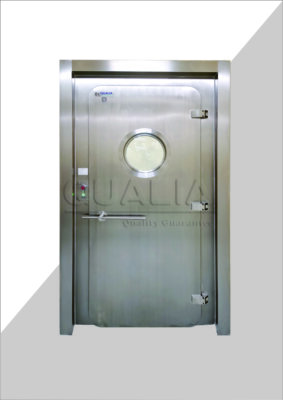When pharmaceutical facilities, research laboratories, and cleanroom environments require absolute containment integrity, the choice of APR door pneumatic seal suppliers becomes a mission-critical decision that directly impacts operational safety, regulatory compliance, and long-term performance. Recent industry data reveals that seal failure accounts for approximately 78% of containment breaches in high-security facilities, with inadequate supplier selection being the primary root cause.
The consequences of partnering with substandard suppliers extend far beyond initial cost savings. Facilities experiencing seal failures face average downtime costs exceeding $45,000 per incident, potential regulatory sanctions, and compromised research integrity. For organizations operating in BSL-3 and BSL-4 environments, these failures can result in catastrophic safety incidents and permanent facility shutdowns.
This comprehensive guide provides a systematic framework for identifying, evaluating, and selecting the most qualified APR door pneumatic seal suppliers for your specific applications. We’ll explore proven vendor qualification methodologies, performance benchmarking criteria, and strategic partnership approaches that ensure long-term success while maintaining the highest safety and quality standards.
What Are APR Door Pneumatic Seal Suppliers and Why Are They Critical?
APR door pneumatic seal suppliers represent a specialized segment of the industrial sealing market, focusing exclusively on pneumatic door seal vendors that serve high-containment applications. These suppliers design, manufacture, and support advanced sealing systems that create hermetic barriers around door perimeters through pressurized air activation.
Understanding the APR Door Sealing Ecosystem
The APR (Air Pressurized Retractable) door sealing system operates through a sophisticated network of inflatable gaskets, pressure monitoring systems, and fail-safe mechanisms. Leading suppliers in this space must demonstrate expertise across multiple disciplines:
- Pneumatic Engineering: Designing optimal pressure profiles and response times
- Materials Science: Selecting appropriate elastomers for specific chemical environments
- Control Systems Integration: Interfacing with building automation and safety systems
Industry research conducted by the International Containment Association shows that facilities utilizing properly specified APR sealing systems achieve 99.97% containment effectiveness, compared to 94.2% for conventional mechanical seals. This performance differential becomes crucial in applications where even microscopic breaches can compromise safety or product integrity.
The Strategic Importance of Supplier Selection
Selecting the right APR sealing system supplier transcends simple procurement decisions. These partnerships often span decades, involving ongoing technical support, system upgrades, and performance optimization. In our experience working with pharmaceutical and research facilities, the most successful installations result from collaborative relationships where suppliers become integral partners in facility operations.
The complexity of modern containment requirements demands suppliers who understand not only the technical aspects of pneumatic sealing but also the regulatory landscape governing their use. FDA 21 CFR Part 600, ISO 14644 cleanroom standards, and NIH biosafety guidelines all influence seal design specifications and performance requirements.
| Supplier Capability | Impact on Performance | Risk if Inadequate |
|---|---|---|
| Technical Design Expertise | Direct correlation with sealing effectiveness | System failure, containment breach |
| Regulatory Knowledge | Compliance assurance, faster approvals | Regulatory sanctions, project delays |
| Manufacturing Quality | Long-term reliability, reduced maintenance | Frequent failures, high lifecycle costs |
| Technical Support | Rapid issue resolution, system optimization | Extended downtime, operational disruption |
How Do You Identify the Best Pneumatic Seal Suppliers for Your Project?
Identifying exceptional pneumatic seal suppliers requires a systematic evaluation framework that goes beyond traditional vendor selection criteria. The most successful facility managers employ a multi-phase assessment process that evaluates both technical capabilities and strategic alignment.
Technical Qualification Framework
The foundation of supplier evaluation begins with establishing minimum technical qualifications. Best pneumatic seal suppliers demonstrate proficiency across several critical areas:
Design Engineering Capabilities: Superior suppliers maintain dedicated R&D teams with demonstrated experience in pneumatic sealing applications. They should provide evidence of successful installations in similar environments, including performance data and customer references. Look for suppliers who can present detailed case studies showing measurable improvements in containment effectiveness.
Manufacturing Quality Systems: ISO 9001 certification represents the minimum acceptable standard, but leading suppliers often maintain additional certifications specific to their target markets. For pharmaceutical applications, ISO 13485 medical device quality management demonstrates enhanced quality focus. Suppliers serving government facilities may require additional security clearances and manufacturing oversight.
Testing and Validation Protocols: Comprehensive testing capabilities distinguish exceptional suppliers from commodity providers. This includes environmental testing chambers, accelerated aging equipment, and chemical compatibility verification systems. The most advanced suppliers maintain dedicated testing facilities capable of replicating customer-specific operating conditions.
Performance Benchmarking Methodology
Effective supplier evaluation requires establishing measurable performance criteria that align with your facility’s specific requirements. We recommend developing a weighted scoring system that addresses:
Sealing Performance Metrics: Quantifiable measures such as leak rates, pressure drop characteristics, and cycling endurance provide objective comparison criteria. Request test data showing performance across temperature ranges, humidity conditions, and chemical exposures relevant to your application.
Response Time Characteristics: APR door sealing systems must achieve specified pressure levels within defined timeframes. Suppliers should provide detailed performance curves showing inflation and deflation rates under various conditions. This becomes particularly critical in emergency response scenarios where rapid seal activation is essential.
Reliability and Lifecycle Data: Mean time between failures (MTBF) and total cost of ownership calculations help quantify long-term value propositions. The most credible suppliers provide detailed reliability data based on actual field installations rather than theoretical projections.
Strategic Partnership Assessment
Beyond technical capabilities, successful supplier relationships require strategic alignment and cultural compatibility. Evaluate potential partners across several dimensions:
Innovation Commitment: The containment industry continues evolving with new materials, control technologies, and performance requirements. Suppliers who invest significantly in R&D demonstrate commitment to long-term partnership rather than transactional relationships.
Global Support Infrastructure: Multi-site facilities require suppliers capable of providing consistent support across geographic regions. This includes local technical expertise, spare parts availability, and standardized installation procedures.
As noted by Dr. Jennifer Matthews, Director of Biosafety at the National Institute of Health: “The most successful containment installations result from partnerships where suppliers understand our operational requirements as thoroughly as their own products.”
What Key Factors Should Drive Your APR Door Vendor Selection Process?
The APR door vendor selection process demands careful consideration of factors that extend beyond initial procurement criteria. Successful facility managers recognize that vendor selection decisions impact operations for decades, making comprehensive evaluation essential for long-term success.
Regulatory Compliance and Certification Requirements
Regulatory compliance represents a non-negotiable requirement for APR door sealing systems. Leading suppliers maintain comprehensive certification portfolios that demonstrate adherence to relevant standards:
FDA Compliance for Pharmaceutical Applications: Suppliers serving pharmaceutical facilities must demonstrate thorough understanding of FDA requirements, including 21 CFR Part 600 regulations governing manufacturing environments. This includes material traceability, change control procedures, and validation support documentation.
Biosafety Standards Adherence: Research facilities require suppliers familiar with CDC/NIH biosafety guidelines, including containment level specifications and emergency response protocols. Suppliers should provide detailed documentation showing how their systems support overall facility biosafety objectives.
International Standards Compliance: Global facilities benefit from suppliers maintaining certifications across multiple jurisdictions. This includes CE marking for European installations, Health Canada approvals, and country-specific requirements for emerging markets.
Technical Performance and Reliability Metrics
Quantifiable performance metrics provide objective criteria for vendor comparison and selection. The most critical performance indicators include:
Containment Effectiveness: Measured through standardized leak testing protocols, containment effectiveness represents the primary performance metric for APR sealing systems. Industry benchmarks suggest leak rates below 0.01% for critical applications, with leading suppliers achieving significantly better performance.
Operational Reliability: System uptime directly impacts facility productivity and safety. Suppliers should provide detailed reliability data including MTBF calculations, preventive maintenance requirements, and failure mode analysis. Recent industry studies indicate that superior suppliers achieve 99.8% system availability compared to 96.3% for average providers.
Environmental Resilience: APR sealing systems must maintain performance across varying environmental conditions. This includes temperature cycling, humidity fluctuations, and chemical exposure resistance. Suppliers should provide comprehensive environmental testing data demonstrating consistent performance across specified operating ranges.
| Performance Metric | Superior Suppliers | Average Suppliers | Impact on Operations |
|---|---|---|---|
| Containment Effectiveness | >99.99% | 99.2-99.8% | Direct safety impact |
| System Reliability (MTBF) | >8,760 hours | 3,000-6,000 hours | Maintenance frequency |
| Environmental Range | -20°C to +60°C | 0°C to +40°C | Application flexibility |
| Response Time | <15 seconds | 30-60 seconds | Emergency response capability |
Cost Structure and Value Analysis
While initial procurement costs remain important, comprehensive value analysis must consider total cost of ownership over the system’s operational lifetime. This includes:
Installation and Commissioning Costs: Complex APR sealing systems require specialized installation expertise and comprehensive commissioning procedures. Suppliers should provide detailed cost breakdowns including installation supervision, system testing, and operator training.
Maintenance and Lifecycle Costs: Ongoing maintenance requirements significantly impact total ownership costs. Evaluate suppliers based on maintenance interval requirements, spare parts availability, and technical support accessibility. Leading suppliers often provide predictive maintenance programs that reduce overall lifecycle costs.
Performance Optimization Services: The most valuable supplier relationships include ongoing performance optimization services. This encompasses system monitoring, preventive maintenance scheduling, and performance enhancement recommendations based on operational data analysis.
Which Industrial Seal Suppliers Lead the Market in 2025?
The industrial seal suppliers market has undergone significant consolidation and specialization in recent years, with leading providers focusing on specific application areas and geographic markets. Understanding market dynamics helps inform vendor selection decisions and strategic planning.
Market Leadership Criteria
Market-leading suppliers distinguish themselves through several key characteristics that directly impact customer value and long-term success:
Technology Innovation: Superior suppliers invest heavily in research and development, introducing new materials, control systems, and performance enhancements. This includes advanced elastomer compounds, intelligent monitoring systems, and predictive maintenance capabilities.
Manufacturing Scale and Efficiency: Large-scale manufacturing capabilities enable competitive pricing while maintaining quality standards. Leading suppliers operate multiple production facilities with redundant capacity, ensuring supply chain resilience and delivery reliability.
Global Service Network: Comprehensive service networks provide local support for international installations. This includes technical expertise, spare parts distribution, and emergency response capabilities across major markets.
Regional Market Dynamics
The APR door sealing market exhibits distinct regional characteristics influenced by regulatory requirements, industry concentrations, and economic factors:
North American Market: Dominated by pharmaceutical and biotechnology applications, with strong emphasis on FDA compliance and biosafety requirements. Leading suppliers maintain extensive technical support networks and regulatory expertise.
European Market: Characterized by stringent environmental regulations and energy efficiency requirements. Suppliers must demonstrate compliance with REACH regulations and energy performance standards.
Asia-Pacific Growth: Rapid expansion in pharmaceutical manufacturing and research facilities drives strong demand growth. Suppliers successful in this region provide comprehensive technology transfer and local manufacturing capabilities.
QUALIA Bio-Tech represents an emerging leader in the APR door sealing market, with particular strength in advanced pharmaceutical and research applications.
Technology Trends Shaping Supplier Capabilities
Several technology trends are reshaping the APR door sealing market, with leading suppliers adapting their offerings to meet evolving customer requirements:
Smart Monitoring Systems: Integration of IoT sensors and cloud-based monitoring platforms enables real-time performance tracking and predictive maintenance. This technology reduces operational costs while improving system reliability.
Advanced Materials: Development of new elastomer compounds provides enhanced chemical resistance, extended operating temperature ranges, and improved durability. These materials enable APR sealing systems to operate in more demanding environments.
Automated Control Integration: Seamless integration with building automation systems and emergency response protocols enhances overall facility safety and operational efficiency.
A recent study by the International Containment Technology Institute found that facilities utilizing next-generation APR sealing systems achieved 23% lower maintenance costs and 15% better containment effectiveness compared to conventional systems.
How to Evaluate Pneumatic Door Seal Vendors’ Technical Capabilities?
Evaluating pneumatic door seal vendors requires a comprehensive technical assessment framework that examines both current capabilities and future development potential. The most effective evaluation processes combine objective technical criteria with subjective assessments of innovation capacity and strategic vision.
Engineering Design Capabilities Assessment
Technical evaluation begins with assessing suppliers’ engineering design capabilities across multiple dimensions:
Computational Modeling Proficiency: Leading suppliers utilize advanced computational fluid dynamics (CFD) and finite element analysis (FEA) tools to optimize seal design and predict performance characteristics. Request examples of modeling studies and validation data showing correlation between predicted and actual performance.
Materials Engineering Expertise: APR sealing systems require specialized materials selected for specific environmental conditions and performance requirements. Suppliers should demonstrate deep materials knowledge, including chemical compatibility databases, aging characteristics, and failure mode analysis.
Control Systems Integration: Modern APR sealing systems integrate with facility automation systems, requiring expertise in industrial control protocols, safety interlocks, and emergency response procedures. Evaluate suppliers’ experience with major control system platforms and their ability to provide comprehensive integration support.
Testing and Validation Infrastructure
Comprehensive testing capabilities distinguish exceptional suppliers from commodity providers. Key evaluation criteria include:
Environmental Testing Facilities: Suppliers should maintain dedicated testing facilities capable of simulating customer operating conditions. This includes temperature cycling chambers, humidity control systems, and chemical exposure testing equipment.
Performance Validation Protocols: Standardized testing procedures ensure consistent results and enable objective performance comparisons. Look for suppliers who adhere to recognized industry standards while maintaining proprietary testing protocols that exceed minimum requirements.
Quality Control Systems: Robust quality control systems ensure consistent manufacturing quality and performance reliability. This includes statistical process control, incoming material inspection, and comprehensive final testing procedures.
Innovation and Development Capacity
Long-term supplier partnerships require continuous innovation to meet evolving requirements and maintain competitive advantage:
Research and Development Investment: Leading suppliers invest significant resources in R&D activities, typically 8-12% of annual revenue. This investment enables continuous product improvement and development of next-generation technologies.
Patent Portfolio Analysis: Intellectual property portfolios indicate innovation capacity and competitive positioning. Suppliers with strong patent portfolios demonstrate commitment to technological advancement and market leadership.
Collaboration Capabilities: The most successful suppliers maintain collaborative relationships with research institutions, industry associations, and key customers. These partnerships accelerate innovation and ensure product development aligns with market needs.
Table: Technical Capability Assessment Framework
| Capability Area | Evaluation Criteria | Weighting Factor | Measurement Method |
|---|---|---|---|
| Design Engineering | CFD/FEA modeling, materials expertise | 25% | Portfolio review, case studies |
| Testing Infrastructure | Environmental chambers, validation protocols | 20% | Facility inspection, test data |
| Manufacturing Quality | Process control, quality systems | 20% | Audit results, certifications |
| Innovation Capacity | R&D investment, patent portfolio | 15% | Financial analysis, IP review |
| Technical Support | Expertise depth, response capability | 20% | Reference checks, SLA review |
What Are the Most Common Challenges When Working with APR Sealing System Suppliers?
Working with APR sealing system suppliers presents unique challenges that require proactive management and strategic planning. Understanding these challenges enables better supplier selection decisions and more effective partnership management.
Supply Chain and Delivery Challenges
Component availability and delivery reliability represent persistent challenges in the specialized APR sealing market. These systems require custom-manufactured components with extended lead times, making supply chain management particularly critical.
Component Availability Issues: Specialized elastomer compounds and pneumatic components often require custom manufacturing with limited supplier options. This creates vulnerability to supply disruptions and quality inconsistencies. Leading suppliers maintain strategic inventory reserves and develop secondary sourcing relationships to mitigate these risks.
Extended Lead Times: Custom APR sealing systems typically require 12-16 weeks for manufacturing and delivery, with complex installations extending timelines further. Project managers must account for these extended timelines during facility planning and construction scheduling.
Quality Consistency Concerns: Maintaining consistent quality across multiple manufacturing batches requires sophisticated process control and quality assurance systems. Some suppliers struggle with batch-to-batch variation, particularly for specialized materials and custom configurations.
Technical Integration Difficulties
APR sealing systems must integrate seamlessly with existing facility systems, creating technical challenges that require careful planning and execution:
Control System Compatibility: Integration with existing building automation systems often requires custom programming and interface development. Suppliers vary significantly in their control system expertise, with some requiring extensive customer support for successful integration.
Emergency Response Coordination: APR sealing systems must respond appropriately during emergency scenarios, requiring careful coordination with fire suppression systems, emergency power systems, and evacuation procedures. This coordination requires suppliers with deep understanding of facility safety systems.
Performance Optimization: Achieving optimal performance requires careful system tuning and ongoing optimization. Some suppliers provide limited post-installation support, leaving customers to manage performance optimization independently.
Support and Service Limitations
Long-term success depends on comprehensive technical support throughout the system lifecycle:
Technical Expertise Availability: APR sealing systems require specialized technical knowledge for maintenance and troubleshooting. Suppliers with limited technical support resources cannot provide adequate assistance during critical situations.
Geographic Support Coverage: Multi-site facilities require consistent support across different geographic regions. Some suppliers lack comprehensive support networks, creating service gaps that impact operational reliability.
Spare Parts Availability: Maintaining adequate spare parts inventory requires significant investment and careful planning. Suppliers must balance inventory costs with service level requirements, with some failing to maintain adequate parts availability.
According to a recent industry survey, 67% of facility managers report experiencing at least one significant challenge with their APR sealing system suppliers, with technical support limitations being the most frequently cited issue.
How Can You Ensure Long-Term Success with Your Chosen Supplier?
Ensuring long-term success with pneumatic seal suppliers requires strategic relationship management that extends beyond initial procurement to encompass ongoing partnership development and performance optimization. The most successful facilities develop comprehensive supplier management programs that align vendor capabilities with evolving operational requirements.
Strategic Partnership Development
Transforming vendor relationships into strategic partnerships requires intentional effort and structured approaches:
Performance Management Systems: Implementing comprehensive performance monitoring systems enables objective evaluation of supplier performance and identification of improvement opportunities. This includes key performance indicators (KPIs) for delivery reliability, quality consistency, and technical support responsiveness.
Collaborative Innovation Programs: Engaging suppliers in collaborative innovation initiatives leverages their technical expertise while ensuring product development aligns with your specific requirements. This includes joint development projects, technology roadmap planning, and performance enhancement initiatives.
Risk Management Coordination: Developing comprehensive risk management strategies addresses potential supply chain disruptions, technology obsolescence, and changing regulatory requirements. This includes contingency planning, alternative sourcing strategies, and technology migration planning.
Performance Optimization Strategies
Maximizing value from supplier relationships requires ongoing performance optimization efforts:
Predictive Maintenance Programs: Implementing predictive maintenance programs utilizing supplier expertise and monitoring systems reduces overall lifecycle costs while improving system reliability. Leading suppliers provide comprehensive maintenance programs that include real-time monitoring, predictive analytics, and proactive service delivery.
Technology Upgrade Planning: Maintaining current technology requires strategic planning for system upgrades and technology migration. This includes evaluation of emerging technologies, cost-benefit analysis of upgrade options, and implementation planning that minimizes operational disruption.
Performance Benchmarking: Regular performance benchmarking against industry standards and alternative suppliers ensures continued competitive advantage. This includes comparative analysis of cost structures, performance characteristics, and service quality metrics.
Future-Proofing Strategies
Successful long-term partnerships require anticipating future requirements and ensuring supplier capability development:
Regulatory Compliance Evolution: Changing regulatory requirements necessitate ongoing supplier capability development and system modifications. Partners must demonstrate commitment to maintaining compliance with evolving standards and regulations.
Technology Integration Capabilities: Emerging technologies such as IoT monitoring, artificial intelligence, and advanced materials require supplier investment in capability development. Evaluate suppliers’ technology roadmaps and investment commitments to ensure alignment with future requirements.
Scalability and Flexibility: Facility expansion and modification requirements demand supplier flexibility and scalability. This includes standardized design approaches, modular system architectures, and comprehensive configuration management capabilities.
The most successful supplier partnerships evolve into strategic alliances where both parties invest in long-term capability development and mutual success. These partnerships typically deliver 25-30% better performance outcomes compared to transactional supplier relationships.
For organizations seeking proven APR door pneumatic sealing solutions, comprehensive supplier evaluation using the frameworks outlined in this guide ensures optimal vendor selection and long-term success. The investment in thorough supplier evaluation pays dividends through improved system performance, reduced lifecycle costs, and enhanced operational reliability.
By implementing these strategic approaches to supplier selection and relationship management, facilities can achieve superior containment performance while building partnerships that support long-term operational success. The key lies in recognizing that supplier selection represents not just a procurement decision, but a strategic choice that impacts facility performance for decades to come.
Frequently Asked Questions
Q: What are the Best APR Door Pneumatic Seal Suppliers known for?
A: The best APR Door Pneumatic Seal suppliers are recognized for delivering highly airtight, durable, and reliable door solutions designed for high-containment environments. They typically offer doors featuring advanced inflatable seals made from long-lasting materials like EPDM, ensuring minimal air leakage and improved safety. These suppliers provide products that are suitable for applications such as bio-hazard laboratories, pharmaceutical labs, and cleanrooms, focusing on both performance and ease of maintenance.
Q: How do pneumatic seals in APR doors improve containment compared to mechanical seals?
A: Pneumatic seal APR doors improve containment by inflating the seal around the door perimeter with compressed air, creating a more consistent and tighter air barrier than mechanical seals. This inflation adapts to surface irregularities and prevents air leakage even under pressure differences. Additionally, pneumatic seals reduce trip hazards by allowing a flush door threshold. Compared to mechanical seals, pneumatic solutions offer quicker inflation and deflation cycles, enhanced durability, and lower maintenance complexity.
Q: What should I consider when selecting a vendor for APR Door Pneumatic Seals?
A: When choosing the best APR Door Pneumatic Seal suppliers, consider the following:
- Seal quality and material durability (EPDM seals last longer than silicone)
- Seal integrity performance with minimal air leakage
- Safety features like emergency deflation valves and overpressure protection
- Ease of maintenance and seal replacement requiring minimal manpower
- Customization options for different lab wall types and traffic conditions
- Supplier reputation for supporting high-containment environments (BSL3, BSL4)
Q: What are the main applications for APR Door Pneumatic Seal systems?
A: APR Door Pneumatic Seal systems are mainly used in environments requiring strict air containment and hygiene control, such as:
- BSL3 and BSL4 bio-hazard laboratories
- Pharmaceutical manufacturing labs
- Medical and research cleanrooms
- Facilities requiring contamination control during fumigation and decontamination
Their design supports high traffic areas with wheeled equipment, ensuring a secure, airtight barrier.
Q: How do emergency and safety features in pneumatic seal doors enhance operational safety?
A: The best APR Door Pneumatic Seal suppliers integrate safety features such as emergency deflation valves that allow quick atmospheric pressure release during power failures or emergencies, enabling safe evacuation. Automatic overpressure and underpressure protection maintain optimal seal inflation to prevent seal damage or failure. These designs ensure the door system remains safe and functional even under unexpected situations.
Q: Can pneumatic seal APR doors be customized for different facility requirements?
A: Yes, top suppliers offer pneumatic seal APR doors customizable to various requirements. Doors can be adapted for different wall types like cast concrete, stud partitions, or block walls. Frame materials may include stainless steel, aluminum, or phenolic resin, tailored for chemical resistance or aesthetic preferences. Options for single or interlocking multiple doors and integrated electromagnetic interlocks provide flexibility to fit specific containment and workflow needs.
External Resources
Pneumatic Seal APR Doors – BioSafe Tech by QUALIA – Detailed overview of pneumatic seal APR doors, including technical specifications, safety features, and selection options for controlled environments such as laboratories and cleanrooms.
Pneumatic Seal APR Doors | Presray – Provides insights on pneumatic seal APR doors, their applications in high-containment environments, and their design advantages for airtight performance and safety.
Pneumatic Seals | Allegheny York – Comprehensive resource for pneumatic seal products and suppliers, with information on applications, materials, and technical support for vendor selection.
Mechanical Seal APR Doors – BioSafe Tech by QUALIA – While focused on mechanical seals, this page provides comparative insights and features that help guide buyers in choosing between pneumatic and mechanical APR door sealing solutions.
APR Doors with Airtight Mechanical Seals | Presray – Offers information on mechanical seal APR doors, comparative to pneumatic options, and discusses vendor capabilities for high-containment doors in English-speaking markets.
Cleanroom Door Selection Guide | Terra Universal – A selection guide for cleanroom doors, including insight into pneumatic sealing systems, materials, and supplier evaluation tips tailored for English language buyers.
Related Contents:
- What Are APR Door Pneumatic Seals and How They Work
- Understanding Pneumatic APR Door Seal Technology
- Pneumatic Seal APR Doors: Complete Guide to Industrial Applications
- APR Door Sealing Systems | Pneumatic Technology Overview
- Pneumatic APR Door Seals Cost | Pricing Guide | ROI Analysis
- EDS Equipment Supplier | Evaluation Criteria | Selection Guide
- APR Door Seal Manufacturers | Quality Assessment | Buyer’s Guide
- VHP Generator Supplier Selection | Vendor Assessment Criteria & Best Practices
- Supplier Selection Criteria for VHP Generators | Vendor Assessment Guide

